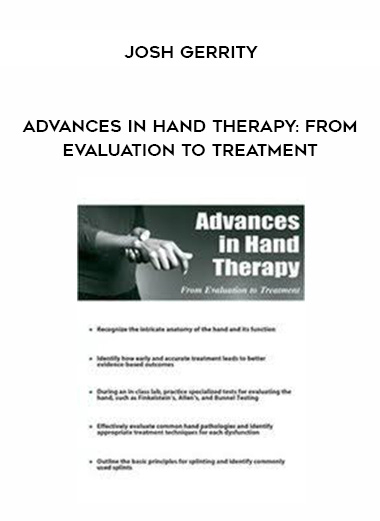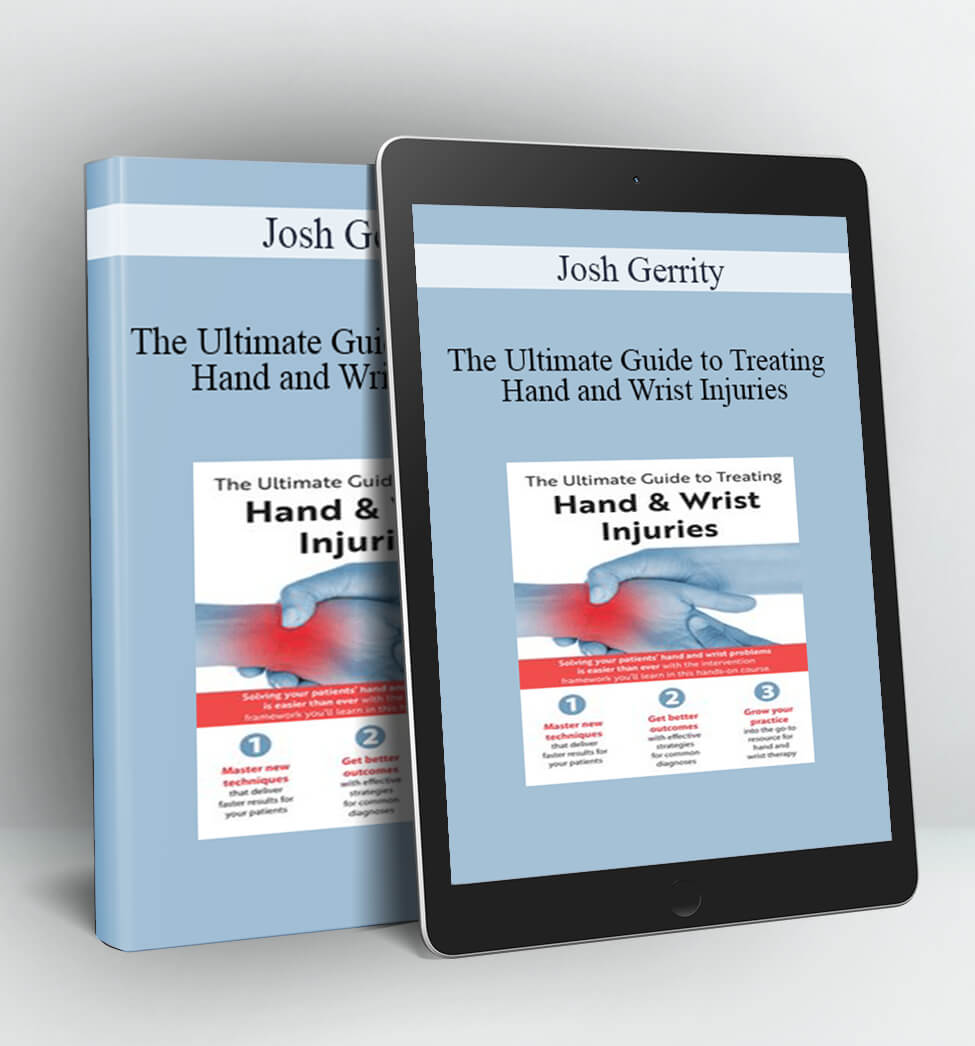
Advances in Hand Therapy: From Evaluation to Treatment – Josh Gerrity
Hand Therapy Essentials
Accurate assessment of hand pathologies is critical for treatment of the hand. Incorrect treatment can cause injuries not to heal or possibly other deformities to develop. Understanding the anatomy and structures within the hand is needed to effectively treat these conditions and prevent further functional impairments.
This recording is designed to give learners a better understanding of the intricate anatomy of the hand and how to accurately evaluate and treat common hand pathologies. Attendees will discuss commonly mistreated injuries and identify treatment recommendations for dealing with these cases in their practice. In addition, this course provides tips and concepts behind different types of splints commonly used for treatment of common hand pathologies. This course gives you tools needed to develop the skills to treat even your most challenging hand patients.
- Examine the intricate anatomy of the hand and determine how this impacts function
- Describe how to effectively evaluate common hand pathologies
- Practice specialized tests commonly used in hand evaluation
- Discover treatment techniques for hand pathologies, including De Quervain’s, carpal tunnel syndrome, and wrist fractures
- Discuss principles for splinting and identify commonly used splints
ANATOMY AND KINESIOLOGY OF THE HAND
- Bones and soft tissues of the hand
- Extensor mechanism of the finger
- Flexor pulley system of the finger
- Vascular supply of the hand
- Nerve supply of the hand
- Kinesiology of the hand and wrist
EVALUATION OF COMMON HAND PATHOLOGIES
- DeQuervain’s
- Carpal Tunnel Syndrome
- Metacarpophalangeal (MCP) collateral ligament instability
- Proximal Interphalangeal Joint (PIP) volar plate and collateral ligament instability
- Sagittal band attenuation
- Trigger finger
- Thumb carpometacarpal (CMC) osteoarthritis
- Extensor pollicis longus rupture
- Extensor indicis proprius rupture
- Flexor digitorum superficialis and profundus rupture
- Intrinsic tightness
- Arterial insufficiency
- Oblique retinacular ligament tightness
PRACTICE SPECIALIZED TESTS FOR HAND EVALUATION (LAB SESSION)
- Finkelstein’s
- Tinel’s
- Phalens/reverse phalens
- MCP/PIP collateral ligament stability test
- Bouvier
- Load and grind test for thumb CMC osteoarthritis
- Assessment of EPL and EIP ruptures
- Assessment of FDS and FDP ruptures
- Bunnel Testing for intrinsic tightness
- Allen’s
- Assessment of the oblique retinacular ligament
TREATMENT OF COMMON HAND PATHOLOGIES
- DeQuervain’s
- Carpal tunnel syndrome
- Collateral ligament instabilities
- Extensor tendon injuries
- Flexor tendon injuries
- Finger fractures
- Hand fractures
- Wrist fractures
SPLINTING BASICS
- Classification of splints
- Indications/Contraindications
- Important landmarks and pressure areas
- Types of material
- Examples of common splints






